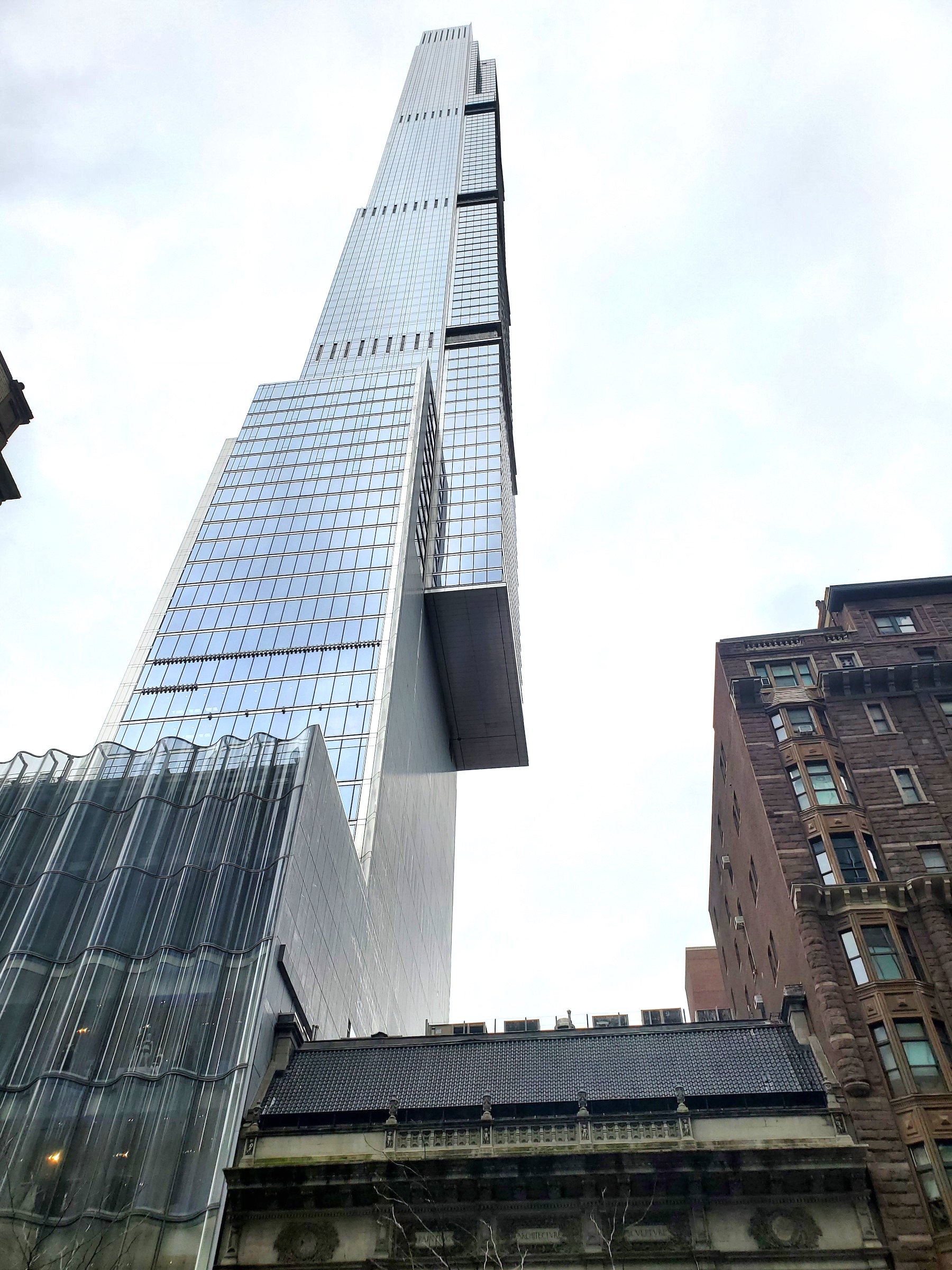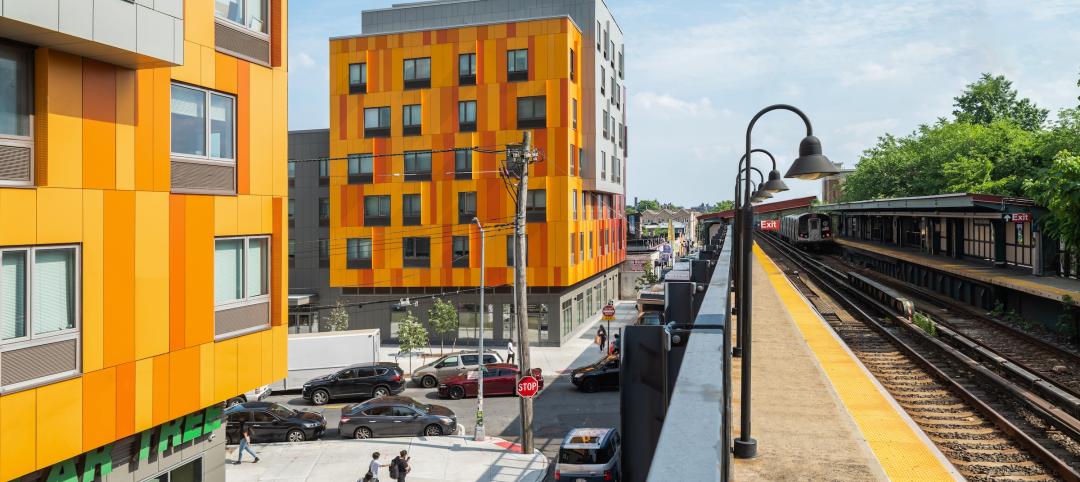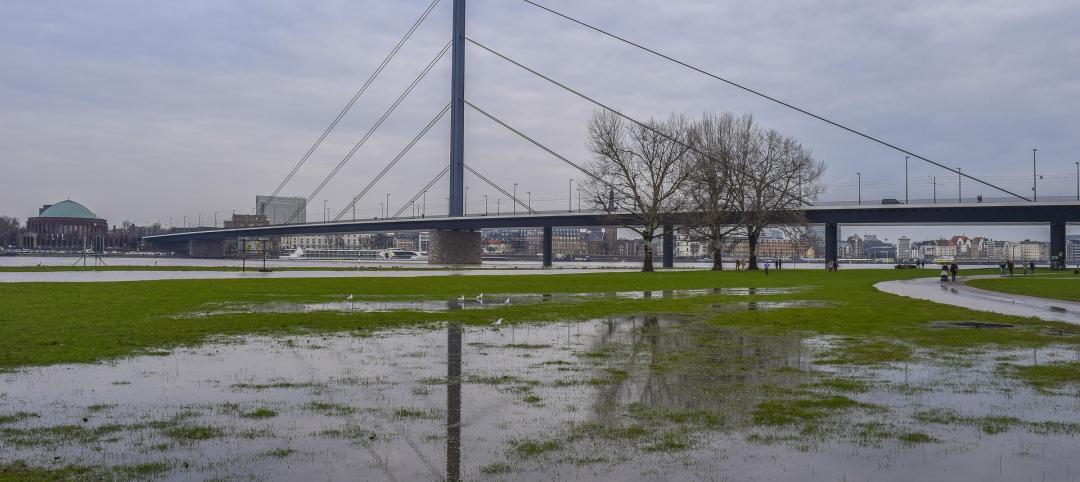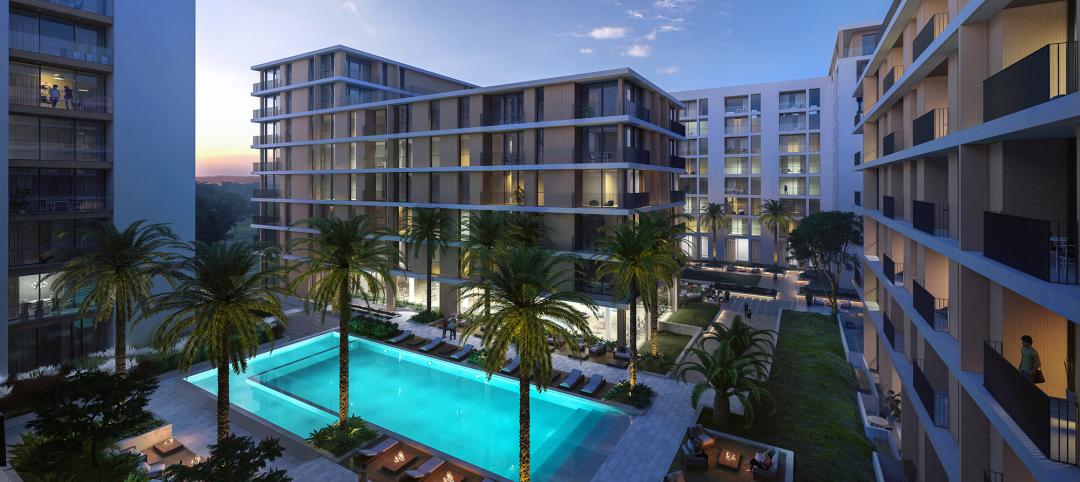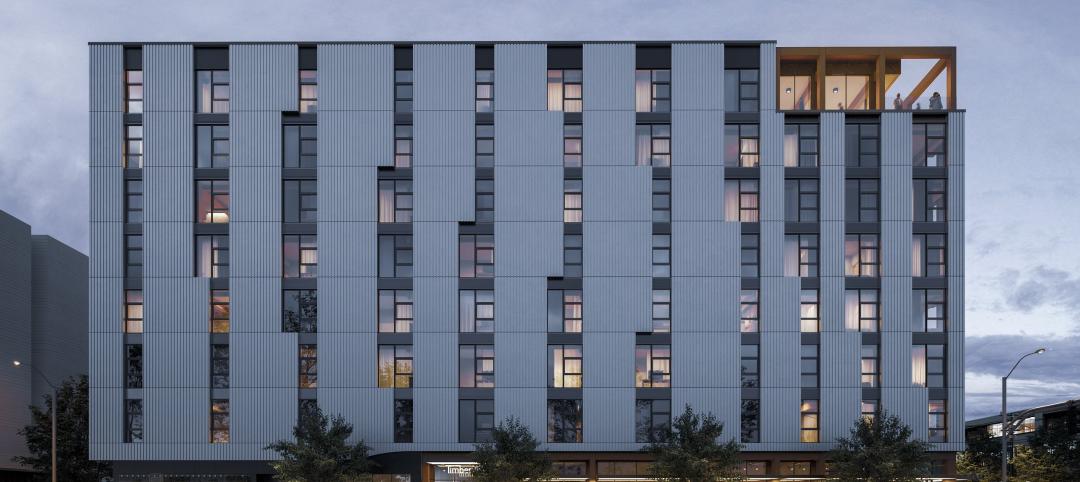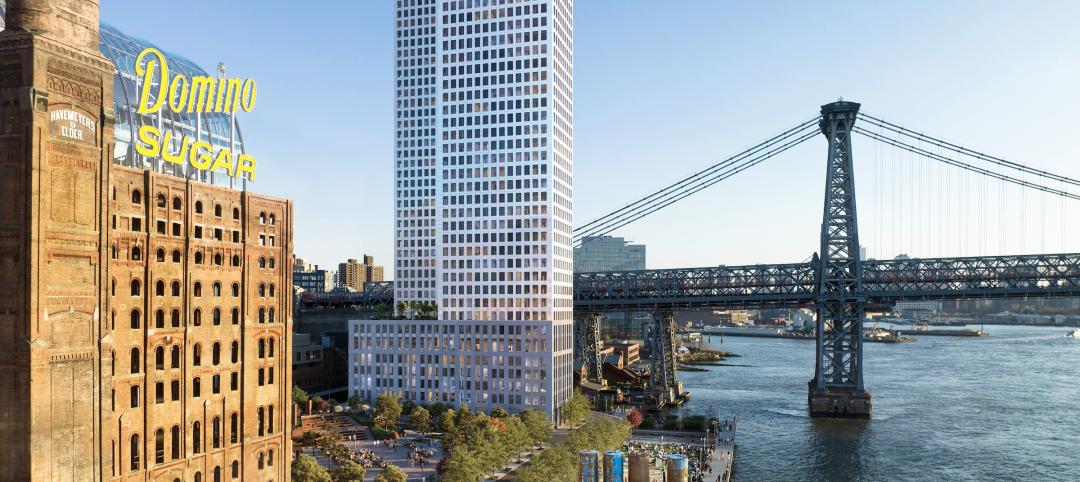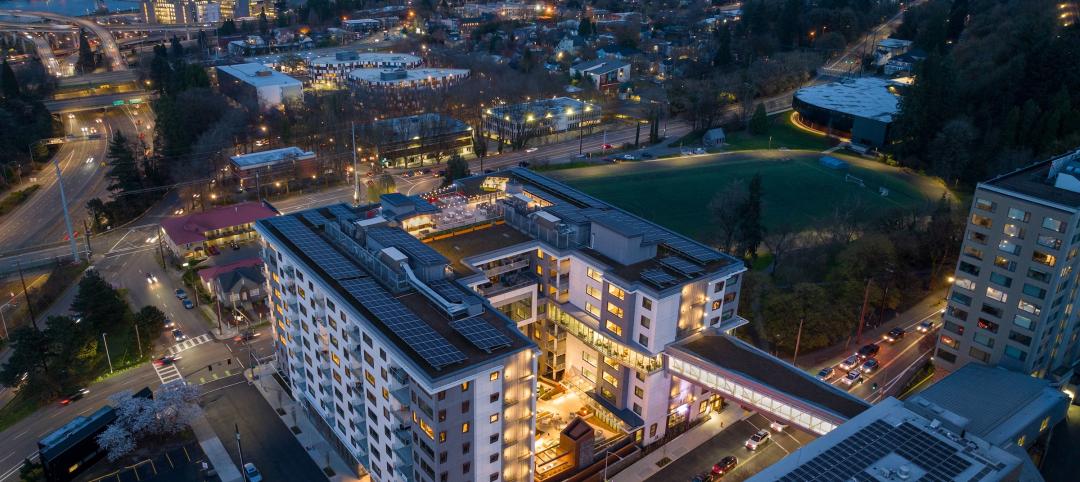Cantilevered buildings seem to be everywhere in New York City these days, as developers and architects strive to maximize space, views, and natural light in residential developments. With a seemingly insatiable demand for housing stock in a city that has limited availability and height restrictions in many areas, cantilevers have become a go-to solution and a design element in their own right. Central Park Tower, New York City’s tallest residential building and home to Nordstrom’s flagship Manhattan department store, famously incorporated the concept on the 13th floor to enhance views of the park.
Bold cantilevered designs are not without challenges though. In addition to basic structural challenges, fire protection and life safety considerations need to be addressed from the perspective of the cantilevered building, as well as from the adjacent building. Both properties are at risk from a fire initiated in either building, which can spread via conduction in solid materials, convection through circulating fluids such as air, or thermal radiation. To maximize life safety and fire protection, New York City mandates stringent standards when considering a cantilevered construction option.
The 2014 New York City Building Code Section BC 705.12 requires a formal, peer-reviewed fire engineering analysis acceptable to the Commissioner of Buildings, where a portion of a new building is cantilevered over an adjacent building or a tax lot by a horizontal distance greater than one foot. A separate approval from the fire department is also required regarding access to the buildings and roofs in accordance with the New York City Fire Code. The New York City Department of Buildings (DOB) filing procedure was thoroughly clarified in the technical document, Buildings Bulletin 2017-014 dated October 25, 2017.
Fire engineering analysis for cantilevered buildings
Detailed plans indicating where the cantilevered portions begin in relation to neighboring properties–as well as fire separation distance–need to be submitted to the DOB. The fire separation distance will be measured perpendicularly from the face of the exterior wall to any neighboring building or tax lot line, whichever is closer. The fire separation distance will be measured individually from all exterior walls cantilevered over a tax lot line. Building code requirements for exterior openings (i.e., windows and doors) and opening protectives near lot lines must also be addressed.
Written descriptions of the existing buildings below the cantilevered portion, as well as the proposed cantilever building (including detailed information regarding passive and active fire protection systems), are also required. Passive fire protection systems do not require any external power but rely instead on specific construction features and the use of materials, products, and building elements that meet well-defined fire performance requirements, such as fireproofing around structural steel.
Devices in active fire protection systems require manual, mechanical, or electrical power. For example, a sprinkler system requires sprinklers to open and a water supply at a sufficient flow rate and pressure after activation to be delivered through the system. A smoke control system relies on roof vents that open or a mechanical system to operate when a fire is detected. A detection and alarm system requires electric power to operate.
Fire engineering analysis must demonstrate that the cantilevered portions and surrounding building elements will withstand the anticipated effects of a “design fire.” A simulation or a model of the anticipated effects of the fire (convection, conduction, and radiation) utilizing generally accepted fire engineering principles needs to be included in the analysis.

Design fire simulation of cantilevered buildings
Finite element modeling and computational fluid dynamics (CFD) computer models may be used to simulate the design fire. The design fire is programmed to occur on a 92°F summer day and last a minimum of 30 minutes. The scenario would involve a total “burn-out” of the fuel source where all active fire suppression systems fail to operate in the existing building below the cantilever and the fire department does not respond. The model will assume optimal fire conditions in which the air is flowing freely through broken windows in the existing building facing or located directly below the cantilever.
The design fire analysis should include the quantity of combustible materials per unit floor area (fuel load density) and the rate in which the fire releases energy (heat release rate, HRR, per unit area) of the existing building. The fuel load density and heat release rate per unit area are based on guidance documents published from the Society of Fire Protection Engineers (SFPE), National Fire Protection Association (NFPA), or another internationally recognized fire protection engineering organization.
The model should account for the type of materials used for the façade of the cantilevered building and window assembly, such as type of glass, and the exterior wall coverings of the façade. The exterior walls, the glazing assemblies, structural elements, and horizontal assemblies will undergo intense failure analysis. The severity of this design fire will vary whether or not the existing building below has a combustible or noncombustible roof. In the case of a combustible roof, the fuel source is the existing building in its entirety. In the case of a noncombustible roof, the fuel source would be limited to the combustible structures and equipment located on the roof (cooling towers, photovoltaic systems, etc.) or the contents of the floor level below the main roof, whichever is the greater hazard. A minimum safety factor of 20% would be applied to any scenario.


The submission documents must include a rooftop plan depicting the current conditions of the existing building’s roof to verify the placement of the design fire scenario. The analysis includes detailed plans of the adjacent existing building, elevation drawings, building sections, soffit details of cantilevered portions, and a site plan of the proposed building, as well as the adjacent building below. All rooftop features, such as equipment, bulkheads, openings, and other elements, need to be indicated and all relevant information provided, including the height of such features. Where the controlling fire is not a rooftop fire, the analysis will provide adequate plans to verify the location of the design fire scenario.
Results of fire engineering analysis of cantilevered buildings
A summary of the results from a nationally recognized and validated CFD fire modeling program or an equivalent calculation methodology indicates if the structure, projecting assemblies, exterior façade, and openings are able to withstand the anticipated effects of the design fire.
The completed analysis, as well as the passive and active fire protection systems in the proposed and affected existing buildings, will be peer reviewed prior to submission to the DOB. The peer review will be performed by an independent, qualified, registered fire protection engineer to determine compliance with basic engineering principles, the New York City Building Code, and all other applicable laws and rules.
In addition, the fire engineering analysis needs to include a statement from the design professional indicating that the structure passes the design fire simulation, and is in accordance with the New York City Building Code.
There is more than meets the eye when it comes to cantilever design. It takes a talented team of architects as well as structural and fire protection engineers to make it happen.
About the Author
Jose Rivera, PE, FPE, LEED AP, is an Associate Principal and Director of Plumbing and Fire Protection with Lilker Associates Consulting Engineers. He brings over twenty years of experience in the design of plumbing and fire protection systems for commercial, institutional, residential and transportation facilities. He is well versed in the evaluation of projects for constructability and cost—from design through construction management—including documents and contractor proposal review, site visits and detailed cost estimating. As an engineer, Jose advocates having fire protection systems based on the building and functions within. For Jose, a career plumbing and fire protection engineer, the ability to make buildings safer is a point of pride. Jose has worked extensively on many high profile projects in the New York metropolitan area. Jose holds a Bachelor of Science degree in Mechanical Engineering from the New York Institute of Technology. He is a licensed professional engineer in the state of New York, and is a member of the American Society of Plumbing Engineers and National Fire Protection Association.
Related Stories
Mass Timber | May 17, 2024
Charlotte's new multifamily mid-rise will feature exposed mass timber
Construction recently kicked off for Oxbow, a multifamily community in Charlotte’s The Mill District. The $97.8 million project, consisting of 389 rental units and 14,300 sf of commercial space, sits on 4.3 acres that formerly housed four commercial buildings. The street-level retail is designed for boutiques, coffee shops, and other neighborhood services.
Adaptive Reuse | May 15, 2024
Modular adaptive reuse of parking structure grants future flexibility
The shift away from excessive parking requirements aligns with a broader movement, encouraging development of more sustainable and affordable housing.
Affordable Housing | May 14, 2024
Brooklyn's colorful new affordable housing project includes retail, public spaces
A new affordable housing development located in the fastest growing section of Brooklyn, N.Y., where over half the population lives below the poverty line, transformed a long vacant lot into a community asset. The Van Sinderen Plaza project consists of a newly constructed pair of seven-story buildings totaling 193,665 sf, including 130 affordable units.
MFPRO+ News | May 13, 2024
Special multifamily report indicates ‘two supply scenarios’
Could we be headed towards a “period of stagflation?” That's the question Andrew Semmes, Senior Research Analyst, poses in the Matrix May 2024 Multifamily Rent Forecast update.
MFPRO+ News | May 10, 2024
HUD strengthens flood protection rules for new and rebuilt residential buildings
The U.S. Department of Housing and Urban Development (HUD) issued more stringent flood protection requirements for new and rebuilt homes that are developed with, or financed with, federal funds. The rule strengthens standards by increasing elevations and flood-proofing requirements of new properties in areas at risk of flooding.
Adaptive Reuse | May 9, 2024
Hotels now account for over one-third of adaptive reuse projects
For the first time ever, hotel to apartment conversion projects have overtaken office-to-residential conversions.
Mass Timber | May 8, 2024
Portland's Timberview VIII mass timber multifamily development will offer more than 100 affordable units
An eight-story, 72,000-sf mass timber apartment building in Portland, Ore., topped out this winter and will soon offer over 100 affordable units. The structure is the tallest affordable housing mass timber building and the first Type IV-C affordable housing building in the city.
MFPRO+ News | May 1, 2024
On the Domino Sugar refinery site, new Brooklyn condominiums offer views of the Manhattan skyline
In Brooklyn, New York’s Williamsburg neighborhood, the new One Domino Square is the first condominium development and the third ground-up residential building on the site of the Domino Sugar refinery. The 700,000-sf project is adjacent to Domino Square and anchors a new 11-acre public park.
MFPRO+ News | Apr 29, 2024
World’s largest 3D printer could create entire neighborhoods
The University of Maine recently unveiled the world’s largest 3D printer said to be able to create entire neighborhoods. The machine is four times larger than a preceding model that was first tested in 2019. The older model was used to create a 600 sf single-family home made of recyclable wood fiber and bio-resin materials.
Senior Living Design | Apr 24, 2024
Nation's largest Passive House senior living facility completed in Portland, Ore.
Construction of Parkview, a high-rise expansion of a Continuing Care Retirement Community (CCRC) in Portland, Ore., completed recently. The senior living facility is touted as the largest Passive House structure on the West Coast, and the largest Passive House senior living building in the country.


